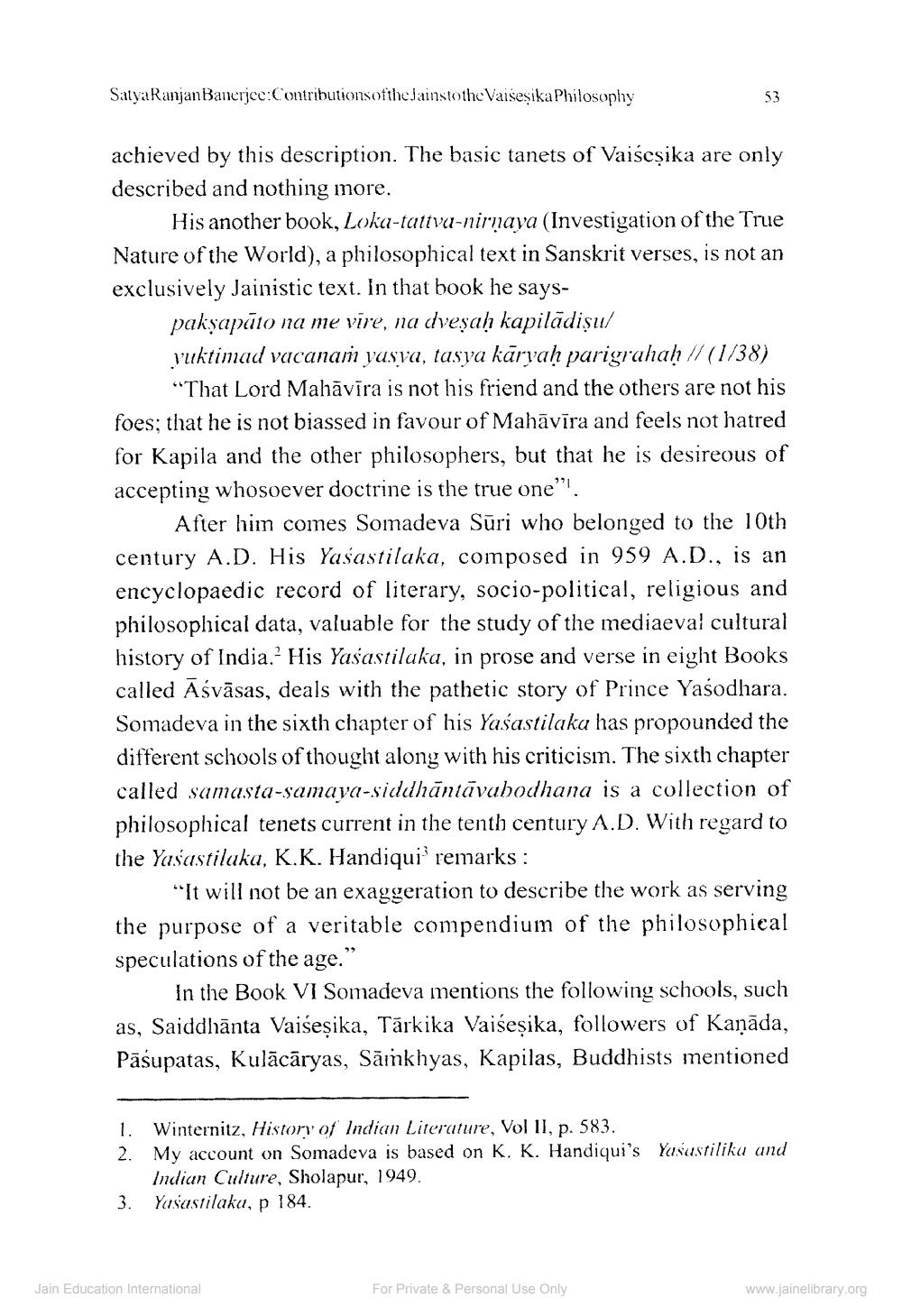Book Title: Jain Journal 2007 10 Author(s): Jain Bhawan Publication Publisher: Jain Bhawan Publication View full book textPage 8
________________ Satya Ranjan Banerjee:Contributions ofthe Jainstothe Vaiseṣika Philosophy achieved by this description. The basic tanets of Vaiścṣika are only described and nothing more. 53 His another book, Loka-tattva-nirnaya (Investigation of the True Nature of the World), a philosophical text in Sanskrit verses, is not an exclusively Jainistic text. In that book he says pakṣapato na me vire, na dveṣaḥ kapilādiṣu/ yuktimad vacanaṁ yasya, tasya kāryaḥ parigrahaḥ // (1/38) "That Lord Mahāvīra is not his friend and the others are not his foes; that he is not biassed in favour of Mahāvīra and feels not hatred for Kapila and the other philosophers, but that he is desireous of accepting whosoever doctrine is the true one". After him comes Somadeva Suri who belonged to the 10th century A.D. His Yasastilaka, composed in 959 A.D., is an encyclopaedic record of literary, socio-political, religious and philosophical data, valuable for the study of the mediaeval cultural history of India. His Yasastilaka, in prose and verse in eight Books called Aśvāsas, deals with the pathetic story of Prince Yasodhara. Somadeva in the sixth chapter of his Yasastilaka has propounded the different schools of thought along with his criticism. The sixth chapter called samasta-samaya-siddhantavabodhana is a collection of philosophical tenets current in the tenth century A.D. With regard to the Yasastilaka, K.K. Handiqui3 remarks: "It will not be an exaggeration to describe the work as serving the purpose of a veritable compendium of the philosophical speculations of the age." In the Book VI Somadeva mentions the following schools, such as, Saiddhanta Vaiseṣika, Tarkika Vaiseṣika, followers of Kaṇāda, Pasupatas, Kulācāryas, Samkhyas, Kapilas, Buddhists mentioned 1. Winternitz, History of Indian Literature, Vol II, p. 583. 2. My account on Somadeva is based on K. K. Handiqui's Yasastilika and Indian Culture, Sholapur, 1949. 3. Yasastilaka, p 184. Jain Education International For Private & Personal Use Only www.jainelibrary.orgPage Navigation
1 ... 6 7 8 9 10 11 12 13 14 15 16 17 18 19 20 21 22 23 24 25 26 27 28 29 30 31 32 33 34 35 36 37 38 39 40 41 42 43 44 45 46 47 48 49 50 51 52 53 54 55 56 57 58
